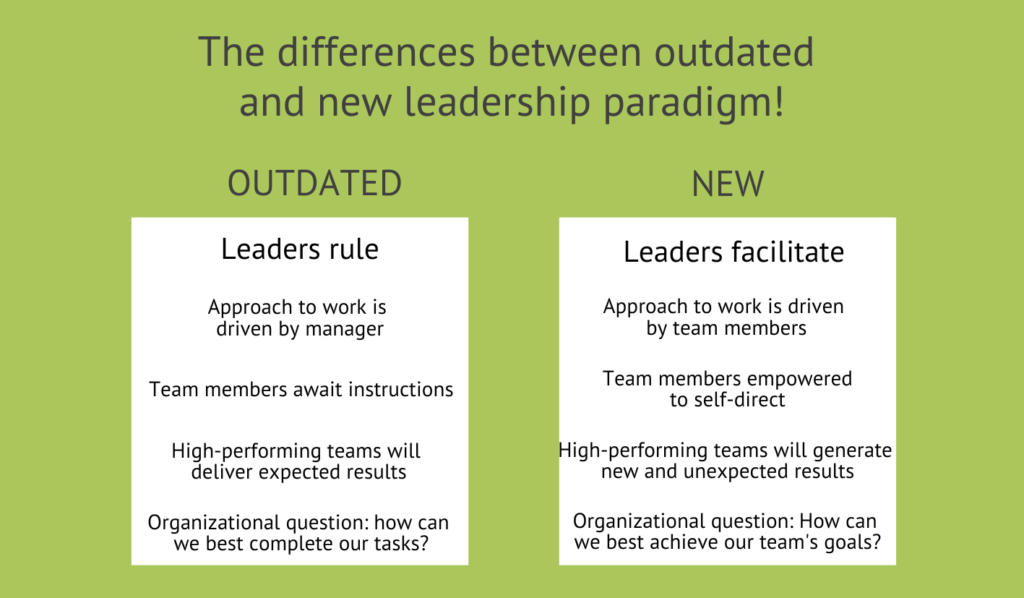Embrace leadership that develops employees to help them grow
Today’s leaders — and organisations — face different challenges than leaders of the past. More than ever we need managers to learn a leadership that develops employees. These challenges require the ability to guide people and transform organisations, to support them in becoming more resilient, innovative, inclusive, and human.
With a constantly high work pace, there is a great risk that everyone is working to be event-driven with a lot of multitasking. This leads to stress, poorer thinking ability, and lower performance than possible. Stressful environments inhibit change, innovation, learning and well-being thrive.
This places high demands on managers’ leadership skills. A new paradigm for leadership is needed. A leadership that develops employees by creating conditions for each individual to thrive and contribute to their full potential.
Leadership skills today mean more than enabling a leader to implement the strategy through a team. Leadership skills must include continuously transforming an organisation from within. This is done through micro-development measures for and between all employees daily. Micro-development means employees learn and develop frequently and in small steps to simplify change processes.
In this blog, you will read about a new paradigm for leadership, what leadership managers need to learn, and how employee development starts to be effective.
A new paradigm for leadership that develops employees is needed
Many surveys in recent years show lower employee engagement than before. This means a crisis for leadership. For several decades, there has been talk of “Learning Organization”.
The concept implies that organisations could improve their capabilities and achieve their goals more effectively if they learned from their experiences at all levels: individual, team and organizational. There are many wise thinkers who contributed to the benefits of learning organisation. For example, Peter Senge, Chris Argyris and Donald Schön. But what happened? How many learning organisations are there today?
Thanks to the wise thinkers, we can clearly see what is needed. A clear system that focuses on human dimensions, which is also simple enough to be used on a large scale.

Managers need to learn leadership that develops employees - promote growth in others
For leadership development to be effective, it needs to bridge the gap between possible and actual performance. When artificial technology and other advanced technologies are used more frequently, the need for skilled leaders is greater than ever.
When technology can replace mundane and repetitive work, leaders need to focus on other things. For example, guiding strategy and making more complex decisions that require great understanding, intuition, and creativity.
Leaders need to skilfully navigate both the technology landscape and the human landscape, with the latter providing the vision, empathy, and strategic insights that machines cannot.
Why is it that we often lack leadership that develops employees despite the obvious need?
Leadership development has a double problem. 1) What we teach is about technical skills, even though these skills are rarely needed for growth, 2) Pedagogy is outdated. It is too theoretical, not sufficiently experience-based, and lacks application in reality.
Technical skills are absolutely needed, but today managers have access to information on how to do better. It is usually this part taught. The part that is more difficult is helping leaders utilise and develop their human skills. That is, the inner skills that allow leaders to use their abilities. For example, 1) empathy to show interest and commitment, 2) Listen to learn, 3) To explore, ask powerful questions, and 4) Leadership that develops employees and promotes growth in others.

Gallup estimates that managers trained in basic coaching skills (empathy, listening, and asking questions) have 72% lower employee turnover in their teams, higher profits, and sales.
Effective employee development starts with the managers
Managers are in a unique position to take a more active role in employee training and development. Employee surveys show employees will stay if companies invest in their development.
As the costs of the Great Layoff continue to grow, companies need more ways to attract and retain employees. An important approach is to offer more training and development.
A recent Gallup poll found that “at least 70% of variance in team engagement is explained by the quality of the manager or team leader.
To increase the opportunity for each employee to develop, good distance training is needed, and managers are strongly involved in the employees’ development process. A recent Gallup poll found that “at least 70% of variance in team engagement is explained by the quality of the manager or team leader.”
Unfortunately, this solution often seems overlooked, which companies need to correct to increase managers’ understanding, knowledge and ability to drive employees’ development process.
Five effective steps to create a more active role for managers in training and developing employees
- Let managers tell you what they need
Managers have a strong sense of the skills their team members need to build. Let managers address specific issues that they believe are holding back their employees’ development. For example, how to give more constructive feedback and how to have more effective individual meetings with employees. - Create goals and structure for learning
It can be difficult for managers to encourage busy and overworked teams with members to learn something new. One solution is to have space and time set aside for learning. The advantage is that it gives managers protection when they encourage their team members to Employees also prefer clear objectives and structure.Research shows that workers generally prefer guided learning experiences, where training content and tasks are released on a schedule with clear milestones, compared to self-paced learning, where all content is available at once.
- Give managers a specific follow-up role
Too few training and skills development programmes create clear roles for managers. This is a mistake. Managers have much more visibility and control over employee priorities than a central HR or L&D team. Education and training programmes should harness this power to achieve greater participation.For example, instead of having a training initiative announced by an L&D person. Consider having the announcement directly from managers to their team members. After that, human resources and L&D professionals can reinforce and remind.
Help managers turn training into action
Managers have a systematic development process for the development of employees to reflect, apply what they learn. Managers should have regular individual follow-up meetings with employees. For example, it is a great advantage to follow up, drive, encourage, support and get employees to set appropriate sub-goals for their development process for the next follow-up meeting.- Collect feedback from managers
The timing of this collection must be different from the employees attending the trainings. Plan implementation until just before the training, where managers can input what they expect, and 30-60 days after the training.
Instead of asking about the quality of education, ask about the impact. How will team members apply what they learn? How did it go for them? What obstacles might be in the way of them using it more effectively?
As employers grapple with profound change in the job market, the burden of employee retention and development doesn’t have to rest solely on HR and training teams. Managers are in a unique position to get employees to retain and engage – companies should give them the structure and tools to do so.
Would you like to learn more about employee development?
Read our blog by clicking on this link: “What it takes for effective annual performance appraisals“
The organizations that will truly excel in the future will be the organizations that discover how to tap people’s commitment and capacity to learn at all levels in an organization.
Peter Senge


